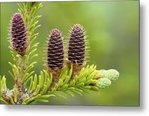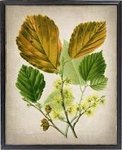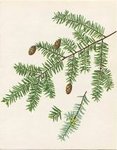Last week I wrote about the medicinal properties of jewelweed, milkweed and burdock. This week since we are in cold and flu season, I will do some cold and flu remedies.
Unfortunately, you …
This item is available in full to subscribers.
Please log in to continue |






Last week I wrote about the medicinal properties of jewelweed, milkweed and burdock. This week since we are in cold and flu season, I will do some cold and flu remedies.
Unfortunately, you probably won't be able to find any of these plants outside right now, but keep a lookout next spring. But here are a few that you can find outside right now.
Eastern white pine which is found everywhere around the area can be used for coughs and sore throat. You make a tea by taking a handful of needles and steeping them in a pint of hot water for ten minutes. Pine is also good for bandaging as well.
A poultice can be made from the inner bark and pitch to be used as a bandage on wounds. European settlers and sailors had been using pine pitch as far back as the twelve-hundreds, using pine tar for wounds.
Another plant that can be found now is the American Holly, “Ilex Opaca”. A tea can be made from the leaves that can be used to treat coughs and colds, and reduce fevers. But make sure that you only use the leaves as the berries from the holly are poisonous.
The tea is made just like the pine tea by taking a handful of leaves and steeping them in a pint of hot water for ten minutes. The last plant you might be able to find this time of year is the quaking aspen. Bark from the quaking aspen can be steeped into a tea that will ease colds, coughs, fevers and stomach pain.
As with any natural remedy, one may work for you while others never seem to achieve the desired results.
Here are some other plants that you are familiar with that will also help with coughs, colds and fevers. Horseradish roots can be crushed up into a poultice and applied to your chest to relieve congestion.
Poultices can easily be made if you have an old school mortar and pestle. These are still available today both locally and online ranging from fifteen to two hundred dollars.
Sunflower leaves can be used for fevers, coughs and bronchitis. A tea is made by steeping the leaves in a pint of hot water for ten minutes like the other remedies. It is just one more reason why you should grow sunflowers in your garden every year.
Sunflowers are also one of the easiest seeds to start indoors with the kids or grand kids. Wait until early to mid April as these seeds sprout and grow quickly and if started too soon will get leggy indoors.
They are best started in peat pots that can be directly planted into the garden once the threat of frost has past.
Next week, I will get into some headache remedies that may be growing in your garden.
Comments
No comments on this item Please log in to comment by clicking here